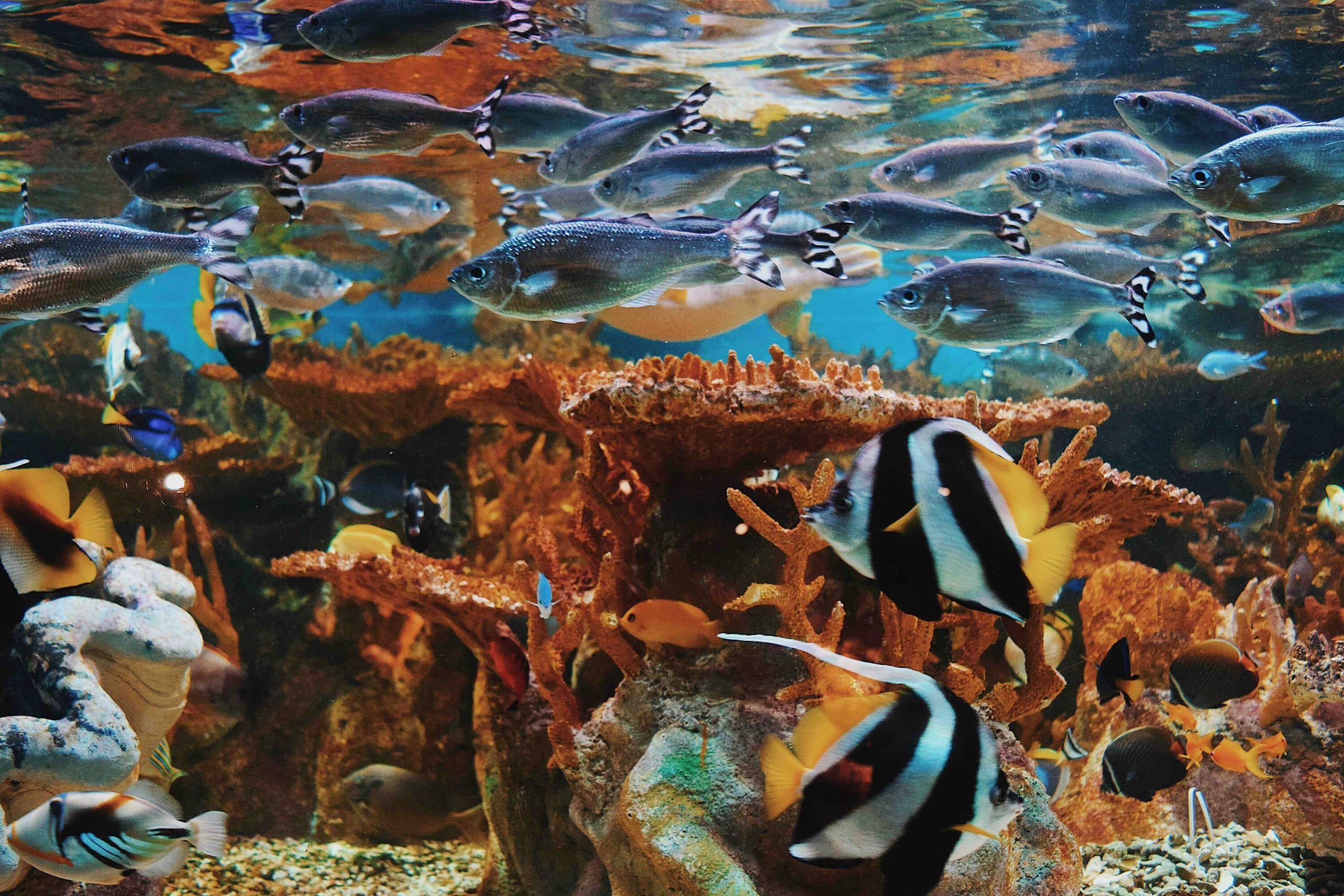What’s the best way to keep your fish tank algae-free?

Maintaining a pristine aquarium is the pride of any fishkeeper. However, the appearance of algae in your tank can be an unwelcome sight, tarnishing the beauty of your aquatic habitat. Algae, while a natural part of many aquatic ecosystems, can overtake an aquarium, leading to poor water quality and an unsightly green hue. Understanding how to control algae effectively is crucial for the health of your fish and the overall aesthetic of your aquarium. Whether you’re dealing with a freshwater tank, a saltwater setup, or a garden pond, the principles of algae management are the same. In this comprehensive guide, we will explore strategies to prevent and combat algae in your aquarium, ensuring your fish thrive in a clean and healthy environment.
Understanding Algae in Your Aquarium
Before diving into algae prevention methods, let’s discuss what algae are and why they can become a problem in your aquarium. Algae are simple photosynthetic organisms that, in the right conditions, can proliferate rapidly. While algae naturally exist in all aquatic environments, an imbalance in your tank can lead to excessive algae growth, often referred to as algae blooms.
Sujet a lire : What are the best fish for a community aquarium?
Algae growth can be fueled by excess nutrients, such as phosphate and nitrate, which are byproducts of fish waste, decomposing food, and decaying plant matter. Additionally, lighting plays a significant role in algae growth. Algae, like plants, require light for photosynthesis. An overabundance of light, whether from artificial sources or sunlight, can result in an algae takeover.
Not only does algae make your aquarium look untidy, but it also competes with your aquarium plants for nutrients and light. This competition can stress your plants and leave them unable to thrive. Moreover, certain types of algae, like blue-green algae (which is actually a type of bacteria called cyanobacteria), can produce toxins that are harmful to fish and other aquatic life.
Dans le meme genre : What are the best chew toys for teething puppies?
Controlling the factors that contribute to algae growth is essential for the health and beauty of your aquarium.
Regular Maintenance: The Key to an Algae-Free Tank
The cornerstone of algae prevention lies in routine maintenance. Regular care of your aquarium will help keep nutrient levels in check and prevent the conditions that foster algae growth.
Water Changes: Performing regular water changes is one of the most effective ways to remove excess nutrients before algae have a chance to thrive. A good rule of thumb is to change 10-20% of your tank’s water every week. This helps dilute the concentration of nutrients and keeps your water parameters stable.
Filter Maintenance: Your aquarium’s filter is paramount in maintaining water quality. Keep your filter clean and ensure it is the appropriate size for your tank. Over time, filters can become clogged with detritus, which can cause nutrient levels to rise.
Tank Cleaning: Algae can cling to any surface in your aquarium. Regularly cleaning the glass, substrate, and decorations will reduce algae’s foothold in your tank. Tools like algae scrapers and magnetic cleaners can help you keep the tank walls algae-free.
Avoid Overfeeding: Overfeeding your fish can lead to uneaten food decaying in the tank, which releases nutrients that algae will use to grow. Feed your fish as much as they can consume in a few minutes, and remove any uneaten food promptly.
Keeping up with these maintenance tasks will minimize the conditions that favor algae growth and help maintain a balanced and algae-free aquarium.
Balancing Light and Nutrients
Light and nutrients are both vital for aquatic life, but when out of balance, they can fuel algae growth. Here’s how to manage these factors effectively.
Light Control: Limit the amount of light your aquarium receives. If your tank is near a window, consider moving it or using blinds to reduce the amount of sunlight. For artificial lighting, aim for 8-10 hours a day and use a timer to maintain a consistent light schedule. This mimics the natural day-night cycle and helps prevent algae from getting continuous light exposure.
Nutrient Levels: Testing your water regularly for nitrate and phosphate levels will alert you to potential imbalances. Use high-quality filters and live plants to absorb these excess nutrients. Plants outcompete algae for nutrients, and a well-planted tank is often less prone to algae issues.
Water Source: Tap water can contain nutrients that contribute to algae growth. Treating tap water with a water conditioner before adding it to your tank will help remove these nutrients. In some cases, using purified or reverse osmosis water may be beneficial.
By monitoring and managing light exposure and nutrient levels, you can maintain an environment that is less conducive to algae growth.
Algae Eating Fish and Plants
Incorporating algae eaters into your aquarium is a natural way to control algae. Certain fish and invertebrates specialize in grazing on algae and can be excellent additions to your tank.
Algae Eating Fish: Many freshwater and marine fish species have a diet that naturally includes algae. Popular freshwater algae eaters include the Siamese algae eater, otocinclus, and certain types of plecostomus. In saltwater tanks, blennies, tangs, and rabbitfish are known for their algae-grazing habits.
Invertebrates: Snails and shrimps are also effective algae eaters. Creatures like the nerite snail, cherry shrimp, and amano shrimp not only add interest to your tank but also tirelessly work to consume algae.
Live Plants: Fast-growing plants can outcompete algae for nutrients. Consider adding floating plants or species like hornwort and duckweed, which are efficient at absorbing excess nutrients.
Keep in mind, while algae eaters can help control algae, they should not be relied upon as the sole solution. They are part of an overall strategy that includes proper tank maintenance and balance.
Innovative Solutions for Algae Control
In addition to the traditional methods, several innovative solutions can assist you in keeping algae at bay.
UV Sterilizers: UV sterilizers use ultraviolet light to kill algae cells, as well as harmful bacteria and parasites. This can be especially useful in ponds or large tanks where algae blooms are a persistent problem.
Algae Inhibitors: There are products available that inhibit algae growth without harming your fish or plants. These can be useful in controlling algae during outbreaks but should be used as part of a comprehensive approach to tank management.
Automating Maintenance: Modern aquarium technology allows for the automation of lighting, filtration, and even dosing of nutrients for plants. These systems can help maintain the ideal balance in your tank even when you’re not around.
Innovative methods can offer additional support in your fight against algae, but remember to research and choose solutions that are safe and appropriate for your specific aquarium setup.
In conclusion, keeping your fish tank algae-free involves a multifaceted approach that balances regular maintenance with strategic planning. By understanding the factors that contribute to algae growth—excessive light, nutrients, and poor water quality—you can take preemptive measures to prevent it. Employing a combination of regular water changes, prudent feeding practices, and controlled lighting can create an environment where algae struggles to gain a foothold. Adding algae-eating fish and plants to your aquarium adds a natural and effective layer to your algae control strategy. And finally, embracing technology and innovative products can provide you with an edge in maintaining a clear and healthy aquarium. By implementing these methods, you will ensure that your aquatic haven remains a vibrant and algae-free display for the enjoyment of all who observe it.
